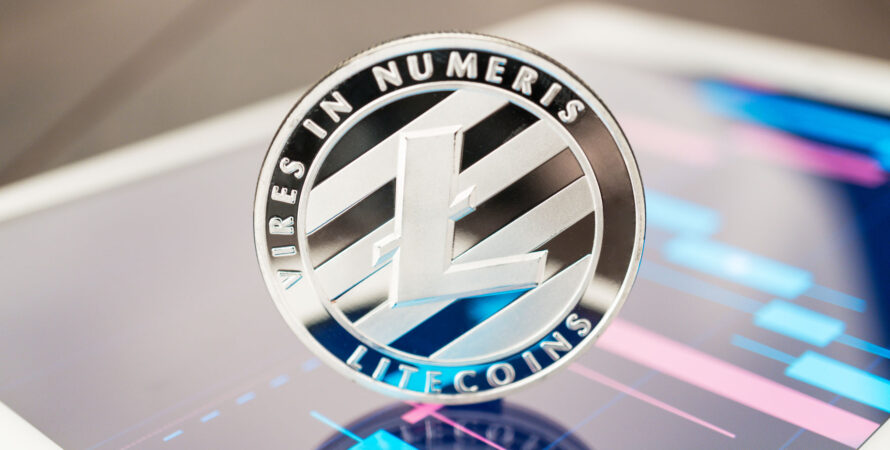Standing out as the third cryptocurrency in the crypto world, Litecoin is a variation of the Bitcoin software that proposes an alternative cryptocurrency that works as a means of payment with lower commissions. This is Litecoin, the featherweight Bitcoin.
One of the most recognized altcoins in the crypto world is Litecoin. This cryptocurrency was born in October 2011, as an alternative to Bitcoin. In fact, Litecoin is a fork of the Bitcoin Core software, with the aim of improving Bitcoin. Its creator Charlie Lee is the ideologue and the most recognized figure in this project. Lee left his job at Google to dedicate himself fully to LTC development and to achieve his goals he partnered with Xinxi Wang and Franklyn Richards.
Among its main proposals, Litecoin seeks to be a cryptocurrency with faster block generation, cheaper commissions and an efficient alternative for payments. This project allows fast payments, because it is focused on the eCommerce segment. The launch of its first version was accompanied by the following message:
We want to create a currency similar to Bitcoin, a currency that is the silver of the gold of Bitcoin. Several altcoins came and have already left, some brought innovation but all had problems. That is why we want the best features that both Bitcoin and these other currencies offer and create a currency with all the benefits of them but with hardly any of their problems.
Litecoin defined itself as a Bitcoin clone created directly from its source code. It also stated that certain improvements had been made and some of the variables for the new network and cryptocurrency were modified. Thus, the genesis block of this cryptocurrency was created on October 13, 2011: that day this new cryptocurrency officially began to work.
Lee, Wang and Richards intend to solve the deficiencies that Bitcoin had according to them:
- Failure to receive some transactions.
- High hardware and energy cost for mining.
- High commissions for transactions.
- Scalability
The success of the project led to a market capitalization of USD 1 billion two years later, in November 2013.
Litecoin features
This cryptocurrency has a limit of 84 million available coins. Its consensus mechanism is based on proof of work (PoW) and the hash function it uses is Scrypt. This algorithm is significantly lighter than SHA-256 but without neglecting security. Being open source development for the entire community.
Litecoin is a cryptocurrency whose generation of blocks takes two and a half minutes, therefore the Litecoin network is four times faster than Bitcoin. In addition, the average weight of the blocks is 65KB, therefore its blockchain is very light. Like Bitcoin, Litecoin uses halving to control its issuance and the block reward for miners. Unlike Bitcoin, in LTC the halving happens every 840,000 blocks (in Bitcoin every 210,000). The last halving in Litecoin happened on August 5, 2019. The event brought the block rewards from 25 LTC to 12.5 and the next halving will be on August 6, 2023. You can review more information about this event on this website.
Like all current cryptocurrencies, Litecoin suffers when it comes to validating transactions, a challenge it must face in order to compete at a high level. Bitcoin allows to verify 7 transactions per second, Ethereum allows to validate 15 transactions per second, VISA allows to validate 56,000 transactions per second while Litecoin only supports validating 56 transactions per second.
Certainly SegWit and Lightning Network help improve these performance numbers, and both options are available in Litecoin.
Litecoin (LTC) strengths
Transaction speed
The first of the great differences between LTC and Bitcoin is the generation of the blocks. Every ten minutes a block is generated in Bitcoin, but in the case of LTC, it is every 2.5 minutes. This is something that greatly reduces the speed of transaction validation.
This is possible thanks to the fact that this cryptocurrency changes its protocol with respect to Bitcoin. Bitcoin’s hash function is SHA-256, while LTC uses the Scrypt function, a lighter algorithm. Thanks to this it is possible to create blocks of less than 1MB. They also allow them to be opened in a faster and more agile way, in order to validate transactions more easily.
Scalability
One of the big problems with Bitcoin is scalability. The original idea was to process a maximum of 7 transactions per second, something that is currently a problem. It should be noted that initially such a strong adoption was not expected and now programmers are faced with finding a solution to the problem.
However, LTC presents a solution to this problem, supporting a maximum of 56 transactions per second. Statistically stronger than Bitcoin and other cryptocurrencies, such as Ethereum, which supports up to 15 transactions per second.
Because all cryptocurrencies are in a very primary phase, work is being done to improve these options. The objective is to rival and surpass other payment solutions, such as VISA. In fact, VISA currently supports about 56,000 transactions per second, infinitely higher than what any blockchain currently supports. This is a problem that is being faced and that will be definitively solved in the coming years. Although at present we can already use options such as Lightning Network that allows making transactions instantly.
Mining
Like Bitcoin, Litecoin makes use of the Proof of Work system, but it differs in the hardware necessary to mine this cryptocurrency. At first, due to little initial competition in Bitcoin, it was possible to mine blocks using the power of the CPUs of our personal computers. But as the price of Bitcoin rose, so did the competition to get a block undermined. In this way, more powerful hardware, such as GPUs, was used and even custom hardware was developed: ASICs.
Litecoin at the moment can be mined with a processor and a graphics card, although there are also specific ASICs for this cryptocurrency. The difficulty, which is based on the power of the network, is still not very high and a relatively decent amount of token can be obtained.
Greater issuance of coins
We have commented that LTC has blocks every 2.5 minutes on average, which reduces the average time of Bitcoin’s blocks by four times, which is 10 minutes. But the differences are not just that. While Bitcoin has an approximate maximum of 21 million available tokens, while the maximum of tokens of this currency is 84 million, that is: four times more.
In addition, the reduction of the emission of coins in each block or halving in Bitcoin occurs every 210,000 blocks, while in Litecoin this figure is of every 840,000 blocks. In this case, the number of blocks required for a halving in LTC is 4 times higher than Bitcoin. Thus, if we take into account the average block issuance time (2.5 minutes) we can conclude that the intention of having programmed the LTC halving in this way is that it takes the same time for the same network to occur as for Bitcoin. .
A bit of history about Litecoin
Something quite curious about this token is that it is classified as the third cryptocurrency developed. The first would logically be Bitcoin, while the second is Namecoin, and Litecoin the third.
Throughout its history, the figure of the creator of Litecoin, Charlie Lee has been peppered with some controversies. Among them, that Lee will be part of the Coinbase exchange until the summer of 2017. Not only that, for a long time he was accused of manipulating the price and having a large number of tokens that could represent a variation or manipulation of the value of the token. To end this criticism, he decided to sell all the units he had of Litecoin and thus end the rumor mill.
Like other cryptocurrencies, LTC also has a non-profit foundation such as Litecoin Foundation; a non-profit organization based in Singapore. The organization focuses on improving the development of this cryptocurrency with a social purpose. It seeks to offer the best and most innovative technologies within the blockchain world and apply them in this token.
Litecoin Foundation
As with other cryptocurrencies, Litecoin has the Litecoin Foundation. This is a non-profit association whose mission is to spread the blockchain technology, the use and the possibilities of cryptocurrency. In addition to fulfilling functions to help finance and advertise projects based on this cryptocurrency.
One of these projects was LitePay, which was being promoted by the Litecoin Foundation, with a great diffusion in the media and social networks, in addition to providing important financial support. However, LitePay and its CEO, Kaith Asare, were involved in a painful scam event that was harshly attacked and criticized on social media. This led the Foundation not to give more money for this project and that it will no longer have this solution specially developed for payments. In a statement from the Foundation they expressed the following:




